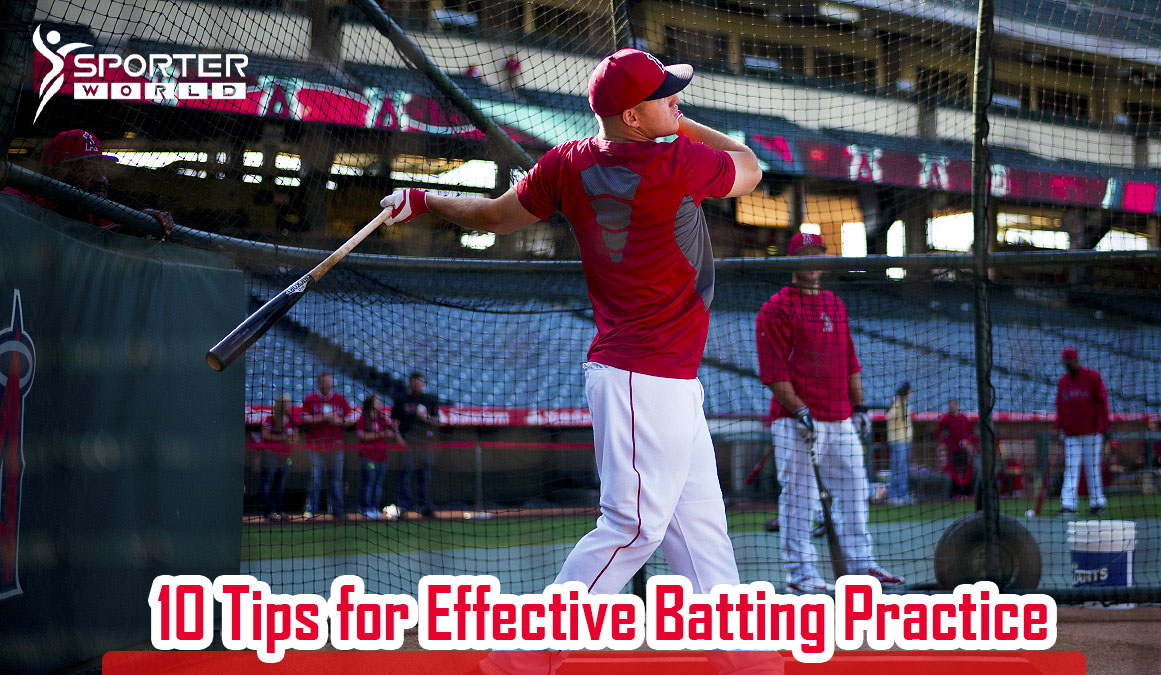Are you a baseball lover looking to improve your batting skills? Whether you’re a seasoned player or just starting out, batting practice is essential for honing your swing and increasing your batting average. But where do you start?
Batting practice is not just about stepping up to the plate and swinging away. It requires careful planning, focus, and a solid strategy. With the right approach, you can turn your batting practice sessions into effective training sessions that will translate to success on the field. From selecting the right drills to analyzing your swing, we will cover everything you need to know to take your batting skills to the next level.
By following these proven techniques and incorporating them into your batting practice routine, you will be well on your way to becoming a standout hitter. So grab your bat, lace up your shoes, and let’s dive into the world of batting practice and discover the secrets to unleashing your full hitting potential.
Here are 10 Tips for Effective Batting Practice
1. Short Distance Live Pitching

In short-distance, live pitching, our ability to consistently throw strikes increases significantly the closer we are to home plate. This is why the ideal distance for pitching batting practice is 15′-18′ away if a screen is available. However, this isn’t always the best approach when we want the fielders to get many live-hit balls during batting practice. At such close range a higher proportion of balls will get caught by the screen, nullifying our intention of giving players plenty of action in the field.
You May Also Like: Baseball Mitt: A Guide to Choosing the Right Mitt for Your Game
2. Focus on the Batting Fundamentals
The fundamentals of batting are the main aspects you should focus on to improve your hitting ability. This includes stance, grip, swing mechanics, approach, and timing. Practice them rigorously during batting practice by focusing on the little details that make a big difference. Work on your form by making slight adjustments if necessary to ensure everything synchronizes.
3. Use a Variety of Drills
When it comes to batting practice, variety is key. Don’t focus too much on one particular drill, as this will limit the amount of skills you can learn and perfect. Try to incorporate different drills into your sessions to develop multiple aspects of your hitting game. This will also help break up the monotony of batting practice and keep you engaged while working on your skills.
4. Analyze Your Swing
An important part of batting practice is being able to analyze your own swing and make the necessary adjustments. It’s easy to get lost in the moment while swinging away, so take a step back and observe yourself from an analytical point of view. Carefully watch how you move and what your body is doing while you swing. Pay attention to your hip rotation, follow-through, and hand position. Take notes on what aspects of your swing need improvement and then work on those areas during your next practice session.
5. Warm Up Properly
Before starting any batting practice session, it’s important to warm up your body and get your muscles ready for the workout. Spend at least 5 minutes stretching and loosening up your core, arms, legs, and back. This will help prevent any injuries while allowing you to perform better during your practice session.
6. Short Front Toss
Short front toss is a smart and easy way for baseball teams to work on their batting skills during practice. It involves standing 10-12 feet from the batter, using a taller screen if available, and delivering firm underhand throws. This distance eliminates any need for fielders to chase batted balls so the focus can be entirely on getting as many strikes and repetitive at-bats as possible. The coach or parent of the batter can also easily practice hitting locations within the strike zone with enough practice – in, out, up, and down. All in all, a short front toss allows coaches to quickly review a team’s batting skills with more focus and accuracy than other methods.
7. Visualization
Visualizing the perfect swing is an effective way to build the muscle memory required to complete a successful hit. Before each practice session, spend a few moments visualizing yourself executing a proper swing and driving the ball with power and precision. Imagine yourself setting up correctly in your stance, gripping the bat firmly, taking a smooth backswing, and following through to make contact with the ball. The more you practice this visualization exercise, the quicker it will become second nature, and you’ll be able to hit successful shots during batting practice consistently.
8. Repetition
Repetition is key to building good habits, and the same applies to batting practice. As with any skill, practice makes perfect for hitting a baseball. Make sure you spend plenty of time going through your drills and repeating them until they become second nature. The more reps you get in during batting practice, the better your muscle memory will be, and the more successful your hits will be. So don’t rush it and take your time perfecting each move and getting familiar with your swing.
9. Take Breaks
It’s important to give yourself a break between batting practice sessions. Taking breaks will help your body and mind recharge so you can return feeling refreshed and ready to tackle the next session. When taking a break, stay active by stretching or doing some light exercises. This will help keep your muscles loose and prevent any potential injuries during the next practice session.
10. Track Your Progress
Tracking your progress is a great way to stay motivated and ensure you’re making the right improvements during batting practice. Set up a chart or spreadsheet to easily record the number of successful hits, the time it took for each drill, and any areas that need improvement. This will help you determine what areas need more work and give you a better understanding of how to make the necessary adjustments to become a better hitter.
Frequently Asked Questions
1. What is batting practice?
Batting practice is a session in baseball where players take turns hitting pitches thrown by a coach or a pitching machine. It is a crucial part of a player’s training routine as it helps improve their swing, timing, and overall batting skills.
2. How often should I incorporate batting practice into my training?
The frequency of batting practice sessions varies depending on factors such as skill level and competition schedule. Generally, it is recommended to have batting practice at least a few times a week to maintain consistent improvement.
3. How long should a batting practice session last?
The duration of a batting practice session can vary, but typically it ranges from 30 minutes to an hour. Focusing on quality rather than quantity is important, making each swing count and working on specific aspects of your batting technique.
4. Can I do batting practice alone?
While it is beneficial to have a coach or teammate to pitch during batting practice, you can still practice alone using machines or batting tees. These tools allow you to work on your swing mechanics and improve muscle memory, even without a partner.
5. What are some drills to enhance batting practice performance?
There are various drills you can incorporate into your batting practice sessions. Some popular ones include focus drills (e.g., tracking the ball), tee drills for precision, soft toss drills for timing, and live pitching drills to simulate game situations. Experimenting with different drills can help you identify areas for improvement and enhance your overall performance during batting practice.
Conclusion
Batting practice is fundamental to any baseball player’s training routine. It helps improve swing mechanics, timing, and overall batting skills. Incorporating repetition, taking breaks, and tracking your progress are important components of successful batting practice. Additionally, drills such as focus drills, tee drills, soft toss drills, and live pitching drills can help enhance performance. By following these tips and taking advantage of the resources available, you can unlock your inner champion and reach your full potential.




